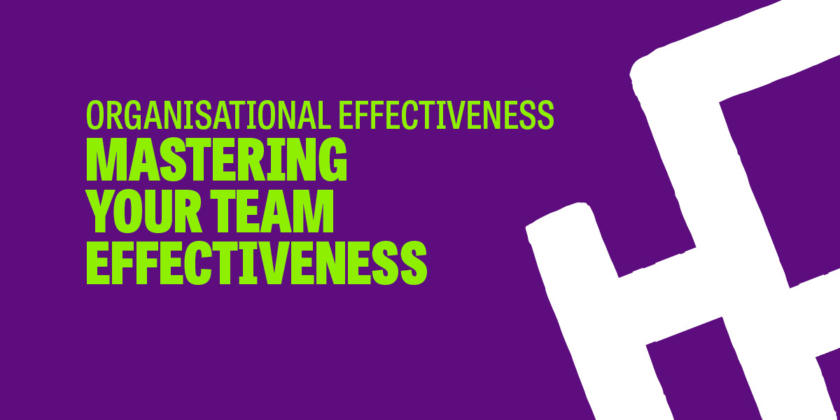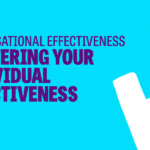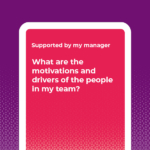Welcome to the ultimate guide on team effectiveness and the secrets behind high-performing teams! In the bustling world of teamwork, some groups seem to effortlessly achieve greatness while others struggle to keep up. But fear not, because in this blog, we’re diving deep into the heart of team dynamics to uncover what sets the champions apart from the rest. From Google’s groundbreaking Aristotle project to Dan Pink’s eye-opening insights on motivation, we’ll explore the colourful world of teamwork and discover the key ingredients that turn ordinary teams into extraordinary ones.
Let’s get ready to unlock the mysteries of team effectiveness and open our eyes to some exciting new ideas!
In this article we will take a wander through:
Lets build with LEGO® SERIOUS PLAY®
The benefits of the Emotional Culture Deck
Tuckman Theory – Forming, Storming, Norming, Performing, and Adjourning
Picture this: a group of curious minds at Google embarks on a journey to uncover the secret recipe for successful and effective teams. No, it’s not a scene from a ancient Greek movie; it’s the ingredients of the Aristotle Project. This project was like a skilled orchestra coming together to perform a symphony – The Conductor is Project Aristotle, the orchestra members being the Google teams, the sheet music acts as the data and research and the whole effective team provides a harmonious performance.
Contrary to popular belief, it wasn’t about having the smartest or most talented individuals on the team. Nope, the real magic ingredient turned out to be something much simpler: psychological safety. In other words, creating an environment where all team members feel safe to take risks, share their ideas, and be themselves without fear of judgement.
Think about it like this: imagine being part of a team where you can freely speak your mind, experiment with wild ideas, and admit when you mess up without worrying about getting smacked down. Sounds awesome, right? Well, that’s exactly what psychological safety is all about.
So how does this connect to team effectiveness? Well, it’s like the foundation of a sturdy house. Without it, the whole thing comes crashing down. But with psychological safety in place, teams can thrive. They trust each other, support each other, and work together towards a common goal.
In the end, the Aristotle Project showed us that success isn’t just about having the right people on the team; it’s about creating the right environment for them to shine. And that’s a lesson we can all take to heart, whether we’re building a team at work or anywhere else in life.
Building a team using the principles of the Aristotle theory is akin to crafting a masterpiece with the perfect blend of colours and textures.
Here’s a step-by-step guide to bringing this theory to life and creating a high-performing team:
- Encourage Psychological Safety: The cornerstone of the Aristotle theory is psychological safety, where team members feel safe to take risks, share ideas, and be vulnerable without fear of judgement. To create this environment, start by building trust among team members. Encourage open communication, actively listen to their ideas, and create a culture of respect and empathy
- Promote an Inclusive Culture : Aristotle’s theory emphasises the importance of diversity within teams. Bringing together a sense of belonging for all, with different backgrounds, experiences, and perspectives. Diversity sparks creativity, promotes innovation, and leads to better decision-making. Celebrate the unique strengths and contributions of each team member and create opportunities for everyone to shine.
- Encourage Building Relationships : Strong relationships are the glue that holds teams together. Encourage team bonding activities, such as team-building exercises, social events, or even just coffee breaks. These interactions help team members build trust, empathy, and understanding, leading to stronger collaboration and cohesion. A team away day is an amazing example of promoting interpersonal connections. Find out more here.
- Establish Clear Goals and Roles: Clarity is key to success. Clearly define the team’s goals, objectives, and expectations from the outset. Ensure that each team member understands their role and responsibilities within the team. Set achievable milestones and regularly communicate progress towards the team’s goals.
- Encourage Collaboration: Aristotle believed that the whole is greater than the sum of its parts. Encourage collaboration among team members, where everyone has a voice and contributes to the collective effort. Foster a culture of teamwork, where ideas are shared, feedback is welcomed, and solutions are co-created.
- Provide Support and Feedback: Supportive leadership is essential for team success. Provide guidance, resources, and encouragement to help team members succeed. Offer constructive feedback and coaching to help them grow and develop. Celebrate successes and learn from failures together as a team.
- Continuously Improve: The journey towards team excellence is ongoing. Encourage a culture of continuous improvement, where team members are always striving to learn, grow, and evolve. Regularly assess team performance, identify areas for improvement, and implement changes as needed to enhance effectiveness.
Shaping your culture to best suit the goals of your organisation and its people is paramount to your success. Let’s Talk Talent can help you to analyse, report and improve your overall company culture with a Culture Audit, this will help drive a great employee experience across your organisation. Find out how here!
By following these steps and embracing the principles of the Aristotle theory, you can build a strong, cohesive, and high-performing team that achieves extraordinary results.
Dan Pink’s Theory on motivation, as outlined in his book “Drive: The Surprising Truth About What Motivates Us,” offers valuable insights into how to support high-performing team effectiveness. Dan suggests that traditional methods of motivation, such as external rewards and punishments, are not as effective in driving performance and satisfaction as intrinsic motivators. He identifies three key elements of motivation: autonomy, mastery, and purpose.
Autonomy refers to the desire to have control over one’s work and decisions. Dan argues that giving individuals the freedom to choose how they approach their tasks and make decisions can lead to increased motivation, creativity, and productivity. In the context of teams, autonomy allows team members to take ownership of their work, contribute their unique perspectives, and feel empowered to make meaningful contributions to the team’s goals.
An example for fun might be, imagine your part of a team working on a top-secret mission to design the ultimate spaceship. In this scenario, autonomy is like being the captain of your own spaceship. Each team member gets to choose their role on the crew, whether they want to be the navigator plotting the course, the engineer building the rocket engines, or the communications officer sending messages to outer space.
With autonomy, team members have the freedom to approach their tasks in their own unique way. The navigator might prefer to chart a course using traditional maps, while the engineer might opt for cutting-edge technology to build the engines. Each team member gets to use their creativity and expertise to contribute to the project in their own way.
As the captain of their own spaceship, each team member feels empowered to make decisions that impact the mission. They have the autonomy to experiment with different strategies, take calculated risks, and explore new ideas without fear of micromanagement or judgment.
In the end, this autonomy fuels motivation, creativity, and productivity within the team. By giving team members the freedom to take ownership of their work and contribute their unique perspectives, the team is able to achieve its goal of designing the ultimate spaceship and boldly go where no one has gone before!
Mastery involves the pursuit of continuous improvement and the desire to become better at what one does. Dan Pink suggests that individuals are motivated by the challenge of mastering new skills and overcoming obstacles. High-performing teams support mastery by providing opportunities for skill development, training, and growth. Team members are encouraged to push their boundaries, learn from their experiences, and strive for excellence in their work.
Purpose relates to the sense of meaning and fulfilment derived from one’s work. Dan argues that individuals are motivated by having a clear understanding of how their work contributes to something greater than themselves. High-performing teams foster a sense of purpose by aligning team goals with a larger mission or vision. Team members understand the impact of their work and feel motivated to make a meaningful difference in the world.
By embracing Dan Pink’s theory on motivation, teams can create an environment that supports high performance and effectiveness. By providing autonomy, allowing mastery, and connecting team members to a larger purpose, teams can unlock the full potential of their members and achieve extraordinary results.
Let Play and Build an Effective Team
With options like the Starter Kit, even 6-year-olds can join in on the action. By combining playfulness with purpose, LEGO® SERIOUS PLAY® transforms ordinary meetings and brainstorming sessions into turbocharged experiences where imagination reigns supreme.
In today’s fast-paced and complex business environment, leadership teams face unprecedented challenges.
LEGO® SERIOUS PLAY® is based on the following assumptions:
- Leaders don’t have all the answers.
- Their success is dependent on hearing and engaging all the voices in the room.
- People naturally want to contribute, be a part of something bigger and take ownership.
- Allowing each member to contribute and speak out, resulting in a more sustainable business.
Today, many leadership teams struggle with communication problems, resistance to change, and a lack of new ideas. LEGO® SERIOUS PLAY® is a way to help with these issues. It’s a method where people use LEGO® bricks to tell stories and think creatively. This helps teams understand each other better and work together more effectively.
Using this process, everyone in the team can build models to represent their ideas. This encourages everyone to join in and helps everyone learn together. Our facilitators are experienced in guiding teams through this process, so they can get the most out of it.
So, whether you’re seeking groundbreaking insights or innovative solutions, grab some LEGO bricks and embark on a journey of creativity and success with LSP.
Learn more about it here.
How to improve your teams Emotional Culture
The Emotional Culture Deck cards are transformative tools that enhance team effectiveness by promoting emotional intelligence and empathy in the workplace. By fostering open communication and trust, they facilitate meaningful conversations about emotions and feelings, this in turn leads to deeper connections among team members. These cards encourage vulnerability and authenticity, breaking down barriers and creating a supportive work environment. Through reflection on emotional scenarios, team members develop self-awareness and emotional intelligence, improving conflict resolution and well-being. Additionally, the cards spark creativity and innovation, tapping into collective wisdom for greater success. Incorporating Emotional Culture Deck cards into meetings and workshops promotes collaboration, communication, and a high-performing culture. Learn more about them here.
Lets look at an example to understand more:
By infusing the weekly Monday morning check-in with the Emotional Culture Deck cards, the team transforms mundane meetings into vibrant celebrations of teamwork and connection. Prompted by questions like “Share a moment of pride in a team accomplishment” and “Describe a time you felt supported by a team member,” each member shares personal stories, fostering empathy and camaraderie. Laughter, tears, and genuine connections abound as the power of the cards ignites meaningful discussions. With the Emotional Culture Deck cards, every meeting becomes an opportunity to spark joy, build empathy, and strengthen the team. Experience the magic here.
The Emotional Culture deck is the number 1 gamified activity to better workplace culture. The deck is a simple game-based activity to re-humanise the workplace for teams. The emotional culture of a team influences several different elements such as employee satisfaction, well-being, burnout, teamwork, trust, and even some hard measures such as financial performance and absenteeism. With emotions having such an impact across a team and the wider organisation, it is important to build them into the conversation which provides a foundation to build individual emotional intelligence along with wide trust and connection across teams.
The ECD helps you flip the conversation. It’s a simple card game toolkit that helps leaders uncover what truly motivates them and their teams, and map desired team culture. As empathy, connections, and trust develop, results go up.
In your workplace, The Emotional Culture Deck will help you drive bottom-up change about what really matters by stimulating face-to-face conversations about team culture and leadership. Some of the world’s biggest and most successful cultures trust this simple yet powerful and flexible tool to nudge vulnerability, build empathy, create connections and foster trust within any team.
Now, to the movies for a wonderful analogy
In his 1965 work, Tuckman outlines five stages that teams typically navigate on their path toward effective team building: Forming, Storming, Norming, Performing, and Adjourning. These stages are vividly depicted throughout the Toy Story movie series. Despite the toys’ long acquaintance since Andy was 8 years old (he’s now 17), they consistently re-establish their roles to confront new and unforeseen challenges in Toy Story 3.
When the toys face the possibility of being stored in the attic or discarded, they enter Tuckman’s (1965) initial stage of ‘Forming.’ They look to Woody for guidance and reassurance, but as fear grips them, they question his intentions and objectives. This evolves into Tuckman’s (1965) ‘Storming‘ phase when the characters survive the dustbin cart and become even more desperate about their fate. Decision-making becomes chaotic as they struggle for clarity and purpose, with conflicts arising over whether to seek refuge or remain loyal to Andy. Power struggles ensue, with Jessie, Woody, and Buzz vying for leadership. Eventually, Jessie’s persuasive vision of a fulfilling future keeps the group focused and united.
The transition into the ‘Norming’ stage occurs for the toys after they experience interaction with the children and learn that Andy is searching for them. When Woody finally arrives to rescue them, consensus begins to form again as they reach agreement.
Woody reassumes his leadership role, and the team of toys re-establishes their respective positions within the group. Tasks are assigned, and the toys revert to being a cohesive and resilient team. As they strive to escape, they seamlessly transition into the ‘Performing’ stage. Each member is fully focused on the plan, actively participating, with notable moments such as Barbie outsmarting Ken and Mr. Potato Head transforming into a flatbread. Their collective effort showcases scenes of autonomy as they persevere until the end.
While the toys remain together, they undeniably undergo the ‘Adjourning’ stage (Tuckman, 1970) towards the end. As they transition into the care of Bonnie – bidding farewell to Andy as he departs for college evokes sadness but they can also find solace in their accomplishments and anticipate the new adventures awaiting them under Bonnie’s care.
In wrapping up, let’s give a high-five to the variety of ways explored in this blog that can pump up team effectiveness and growth!
By focusing on open chatter, trust-building, and boosting emotionally smart teams can turn the workplace into a playground of collaboration and success. Whether it’s during your weekly pow-wows, creative brainstorming sessions, or just a casual hangout, incorporating these vibes can make teamwork a total blast.
So, let’s keep the good times rolling, sprinkle some fun, and watch our teams thrive like never before!
If you need some guidance or support to implement a fresh look at your organisational culture or internal team culture then look here to book a call and see how we can support you.



